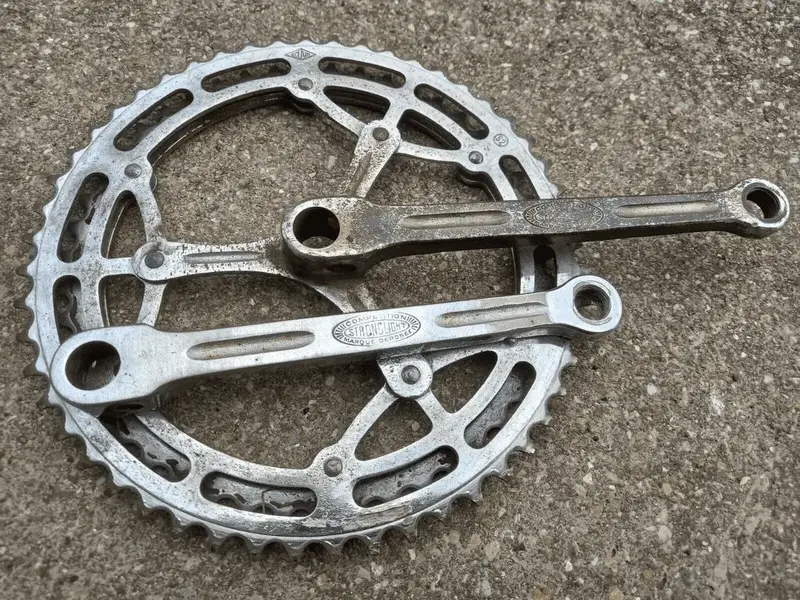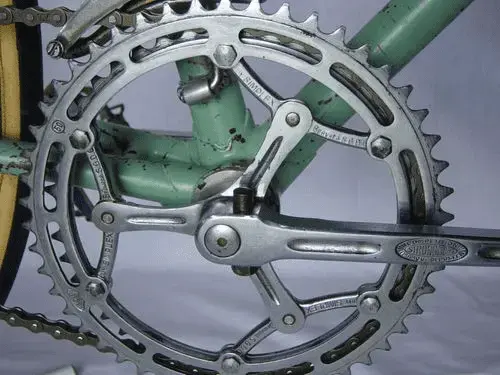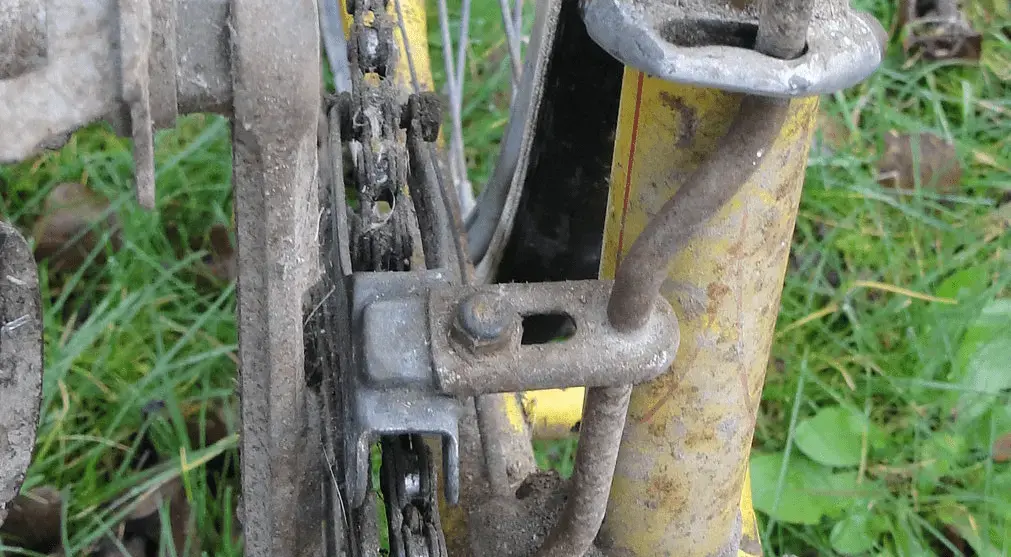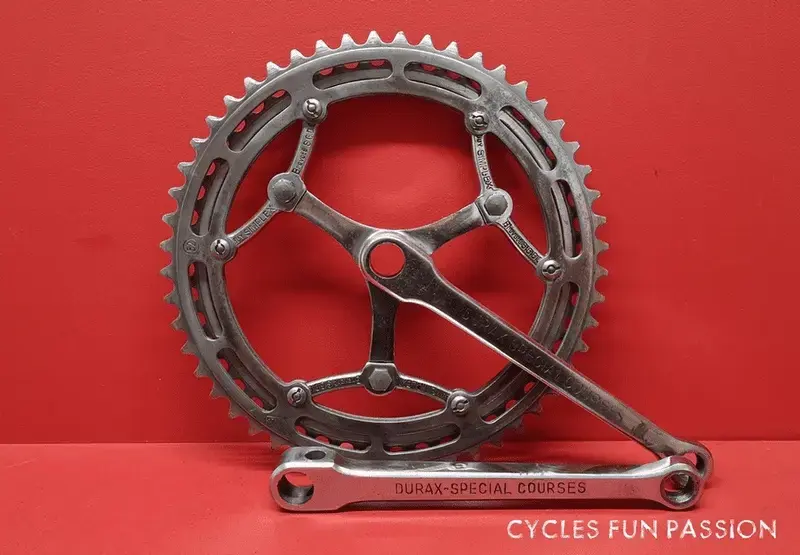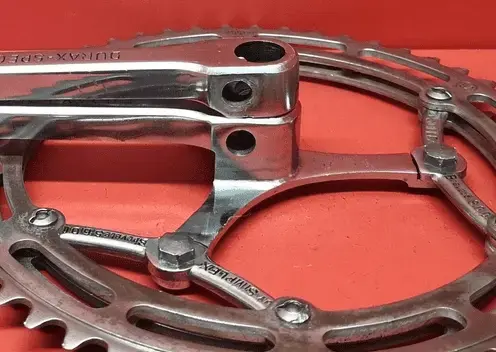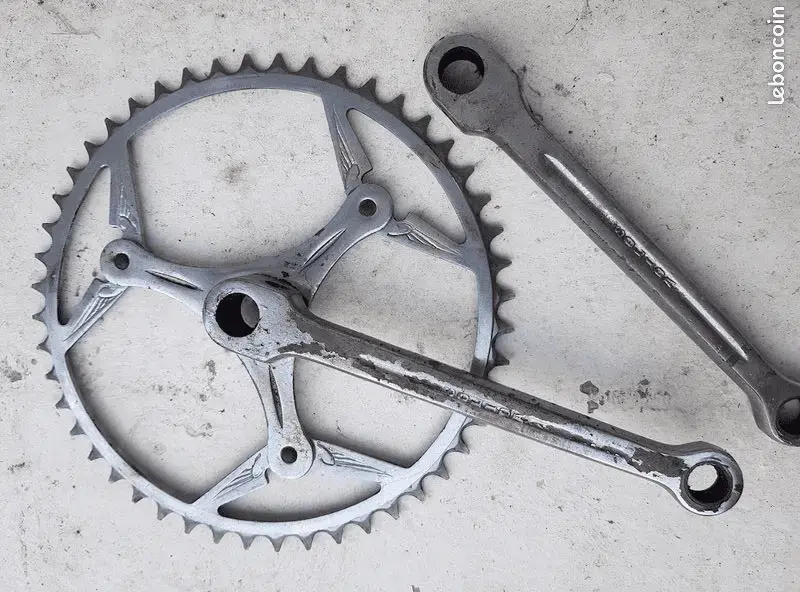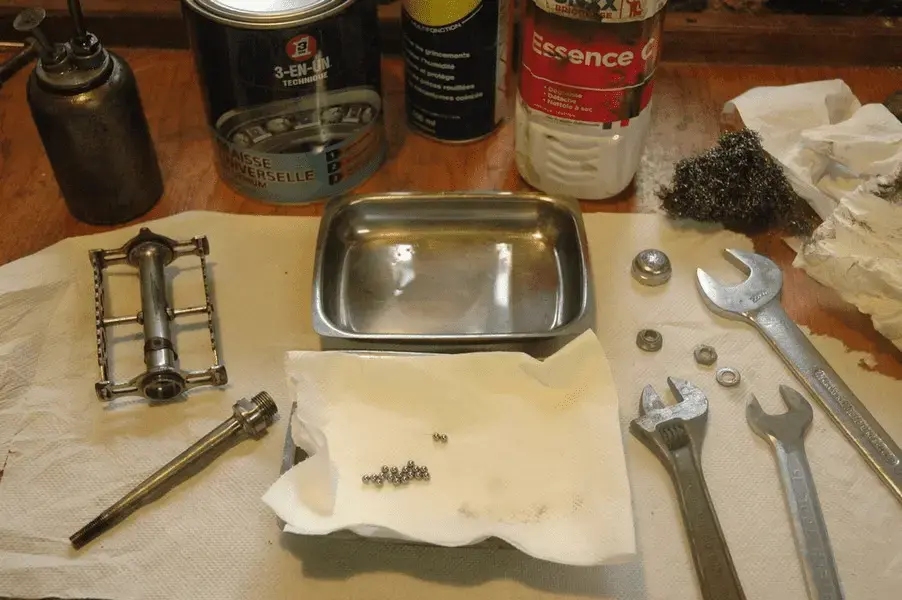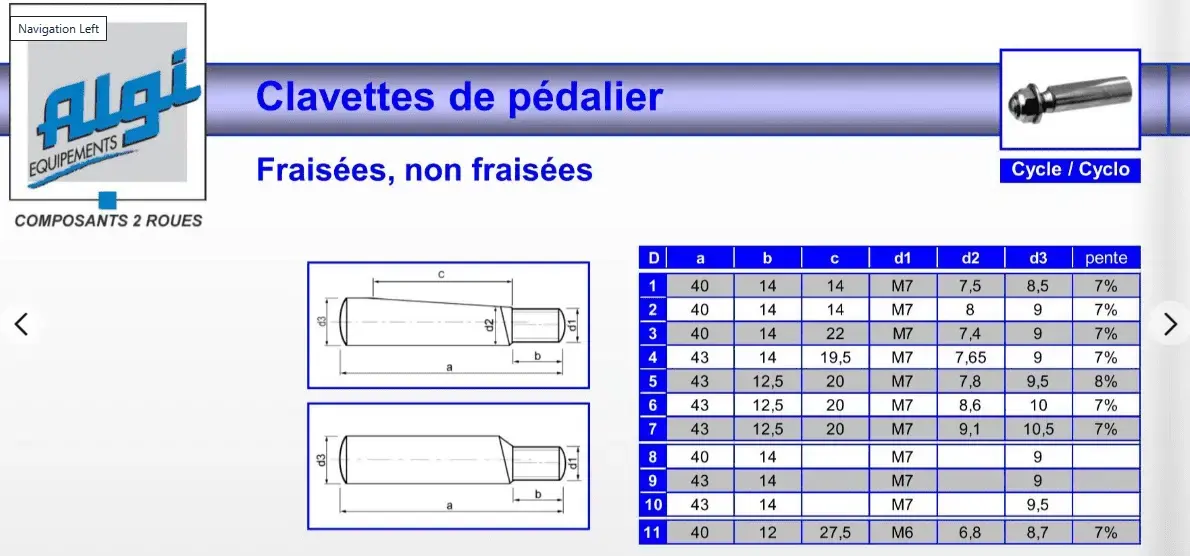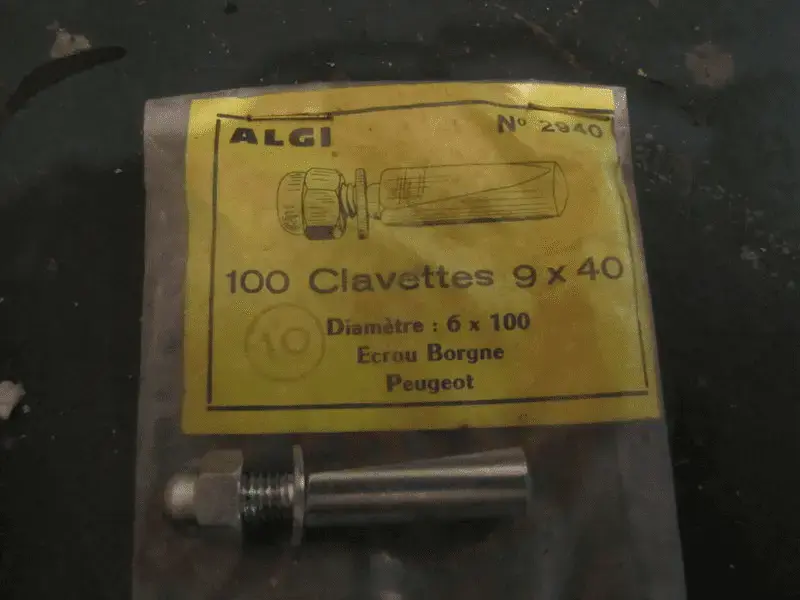Your three arm crank has a different maybe early Stronglight stamp so maybe originally for a single ring. The 54 & 55 cranks in the 58 catalogue states compatible with both single and double rings so probably a greater distance from the centre of the cotter pin to face of the spider. Need the distance on a 54 or 55 to check against yours, a message to the seller on eBaySpacers on the three arms will work but finding longer bolts could prove tricky

I swear I have cried blood from my eye balls over this. There is most certainly a specification change of these cranks over time exactly like you say, and the few photographs of original builds seem to confirm this. It's hard trusting some sellers who cobble anything together.
Basically looks like they widened the drive side part that sits on the axle - the crank I have the cotter pin sits half way between the spider and edge, but some I see there is a slightly greater distance to the left (inboard DS) towards the spider.
I bombed the other @Guinessisgoodforyou thread to try understand more:
https://www.retrobike.co.uk/threads...andonneurs-commuters-town.451394/post-3419897
I still don't have the best solution, but I can't help again think this bike is very transitional in the four speed era - there's a step in the 3 speed mono-vitesse up front and the top end racer boys of the day were enjoying 5 speed freewheels with a wider rear spacing. The expertise in building and what was available must have been a bit of nightmare too for the original constructures.
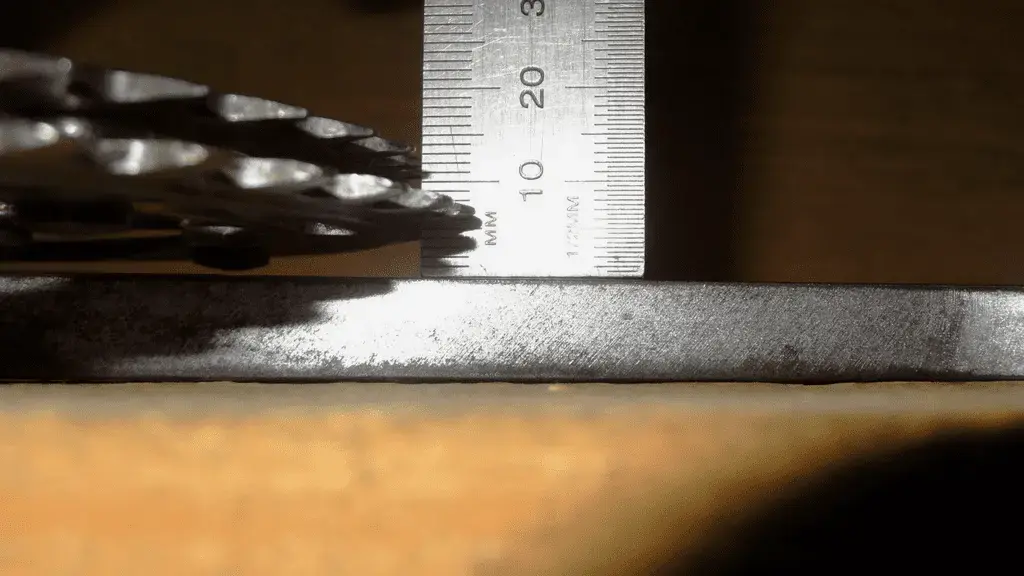
Thanks for your support and input again @vcballbat too - virtual drink token for you
